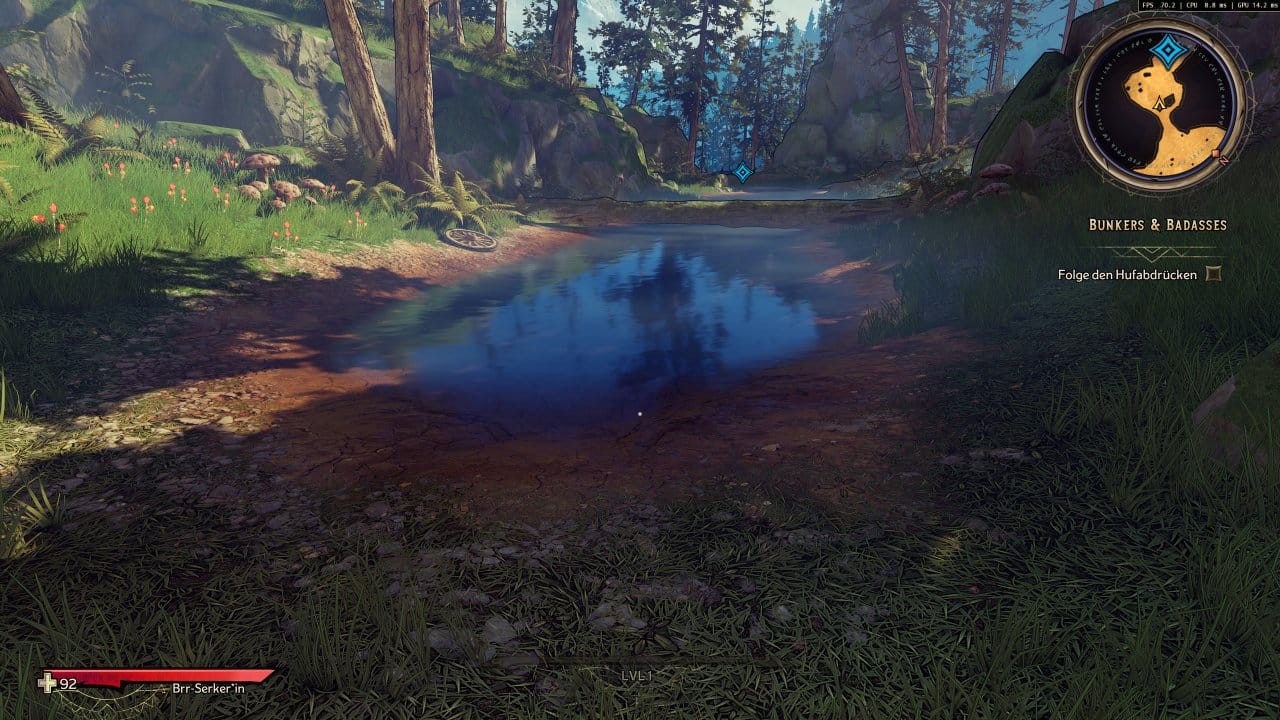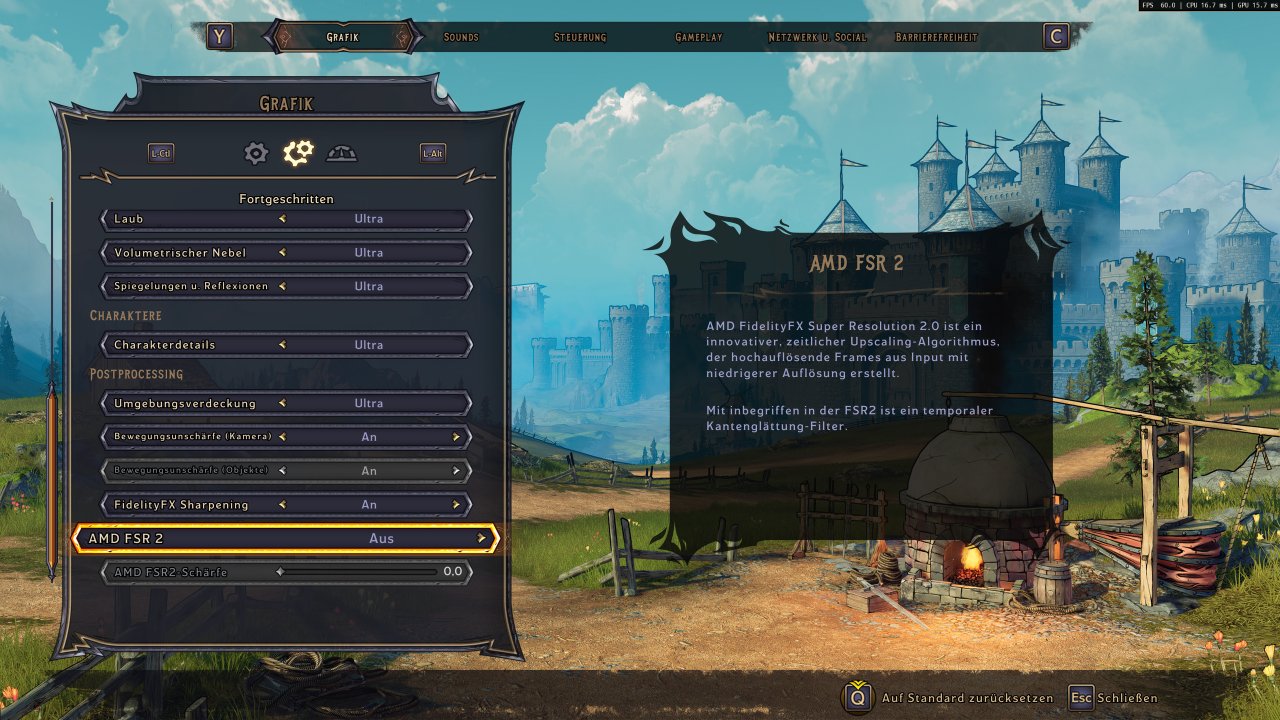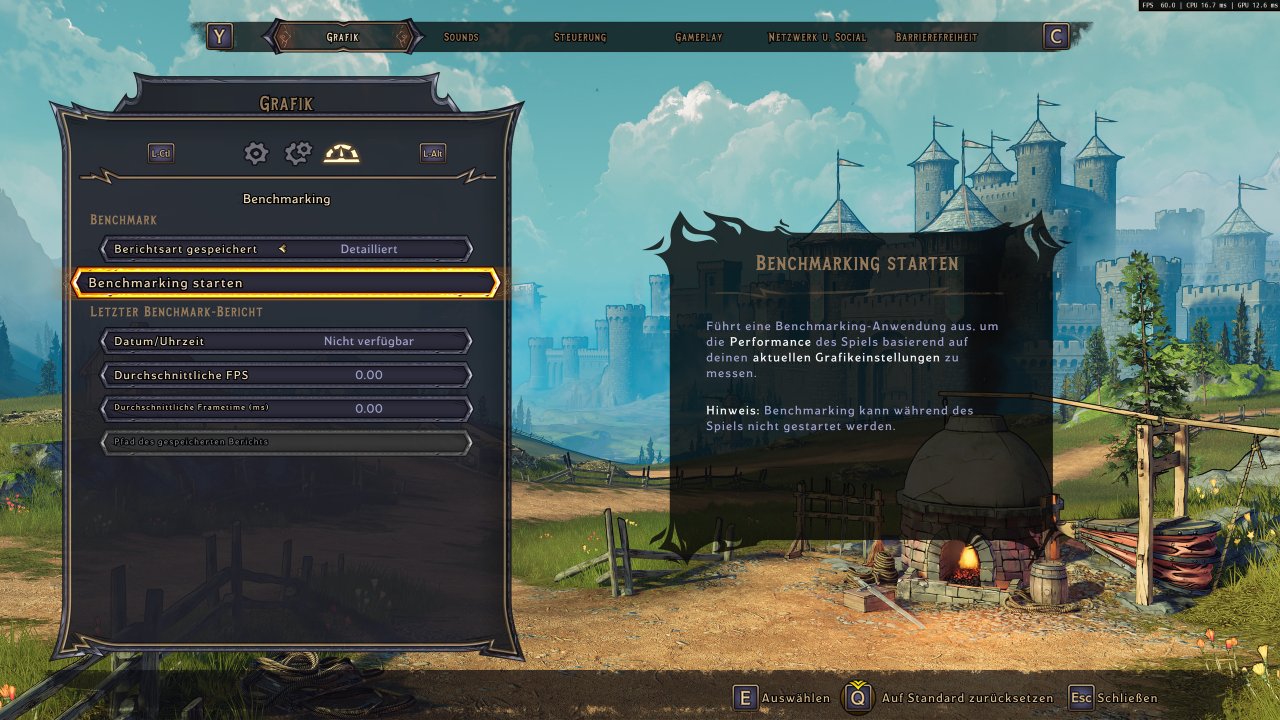FSR 2.0 meets Unreal Engine 4: Ups and downs in Tiny Tina’s Wonderlands [Update: FSR 2.0 jetzt tadellos]

Update from 14.12.2022: On August 11, a Patch for Tiny Tina’s Wonderlands to version 1.0.5.0a released, which introduces many improvements. Technically, a better frame rate and stability are promised, but the item “Various FSR 2.0 improvements” made us prick up our ears. As a reminder: In this technical test of Tiny Tina’s Wonderlands, AMD’s upsampling process suffered from pronounced ghosting/smearing, which we recorded in several videos. It is all the more pleasing what our fresh sample showed after the update: FSR 2.0 now works perfectly. As with any temporal method, there is minimal to slight streaking in moving objects, but the obvious and very annoying artefacts are passé. Just below this text is a brand new capture of FSR 2.0 (Performance) in Tiny Tina’s Wonderlands.
Side note: FSR 2.0 is well on its way. In addition to the very good condition in Tiny Tina’s Wonderlands, the AMD upsampling also leaves a good impression in the new Spider-Man Remastered. According to our samples, FSR 2.0 is placed here as an attractive compromise between the soft-focus image of IGTI and the more detailed, but sometimes crumbly DLSS. We will, of course, remain on the ball and will keep you up to date on all developments relating to FSR 2.0.
Original article from 06/30/2022: After a three-month exclusivity in the Epic Store, Tiny Tina’s Wonderlands is now also available on the market leader Steam. Tina’s Adventures is a humorous looter shooter in the Borderlands universe based on Unreal Engine 4. In addition to a number of innovations, gameplay tweaks and the humorous corruption of popular table-top role-playing games such as Dungeons & Dragons, the comic shootout convinces with a comparison to Borderlands 3 quite significantly improved graphics. Since the update to version 1.0.4.0A, Tiny Tina’s Wonderlands has also offered AMD’s still young temporal upsampling method FSR 2.0 in the graphics menu, which is very convenient for users of said graphics cards. Because even Borderlands 3 is still quite a demanding game with full graphics details and high resolutions.
The improved graphics increase the pixel load in Tiny Tina’s Wonderlands in particular. A clean upsampling process that preserves the added subtleties and is still able to relieve GPUs is therefore very welcome. In this article, we examine the quality of AMD upsampling and make some comparisons. A gameplay test of Tiny Tina’s Wonderlands can be found with our colleagues from PC Games.
In the period between the release of Borderlands 3 and Tina’s solo career, the world has not stood still and Unreal Engine 4 has also received some improvements over time. Tiny Tina’s Wonderlands is still based on the Version 4.20(.3), which was released in July 2018. Nevertheless, the spin-off offers a noticeably improved look compared to Borderlands 3, especially the often dense vegetation is now finer. In addition, some effects seem to have received some revision, including the volumetric effects and their interactions with the lighting. Favored by the now more frequent foliage through which they can sting, the fine God Rays, for example, catch the eye. In general and apart from a few oddities, including the often conspicuously absent screen-space reflections on water surfaces, the graphics of Tiny Tina’s Wonderlands are very attractive and also relatively immune to the ravages of time – the comic look ages better than the attempt to look as realistic as possible.
Tiny Tina’s Wonderlands: Cube Map Reflections in Action
A small digression before we turn our attention to the upscaling: The cube map reflections of the many small water areas usually fit the scene well, but are often visibly pixelated because these textures were saved with a tiny resolution. The alternative to these rigid structures would have been screen space reflections (SSRs), also in combination with cube maps. In Tiny Tina’s Wonderlands, this only happens with large bodies of water, such as the sea. The advantage of pure cube mappings is that, unlike SSRs, they cannot be “wiped” out of the picture, they also work outside of the screen space. At first glance, the cube maps with an additional distortion look excellent on some puddles, as can be seen in the image comparison above. On closer inspection, however, discrepancies between the world and its (fake) reflection always become apparent. The solution to all problems is ray tracing – however, Tiny Tina’s Wonderlands offers just as little as DLSS, although the (current) Unreal Engine 4 makes both feasible with relatively little effort.
Tiny Tina’s Wonderlands: FSR 2.0 & Benchmark



Although the similarity in name suggests a certain technical proximity, FSR 2.0 has relatively little to do with its predecessor, FSR 1.0. The upscaling techniques are conceptually similar – a low resolution is upscaled to a higher one. The image is filtered to prevent gross scaling artifacts – under the hood, however, FSR 2.0 has little in common with FSR 1.0, in fact, according to AMD, FSR 2.0 was developed from scratch. Perhaps the most important innovation in FSR 2.0 is that the new upsampling process now works temporally and no longer purely spatially. But this is only part of the innovations. From here on we refer to AMD’s review guide, but rather to the detailed and insightful GDC presentation, which we would like to recommend to interested parties who want to take a closer look at AMD’s new upsampling technology. We summarize the most important points for you below.
Even if FSR 2.0 is a completely new technology compared to FSR 1.0 and achieves significantly better results, the actual image processing, i.e. the upscaling of the color buffer, works in FSR 2.0 in a relatively similar way to that in FSR 1.0. The extrapolation is done using Lanczos filters. AMD’s Robust Contrast-Adaptive Sharpening (rCAS) is also offered, but with FSR 2.0 you can use the slider to adjust the sharpness to your own requirements. FSR 2.0 also doesn’t rely on machine learning like its DLSS competitor, so it doesn’t require any special hardware and runs on graphics cards (and consoles) from any manufacturer. As with FSR 1.0, AMD has also decided to make the technology publicly available in open source form. But that’s where the similarities end, because apart from a few filters, broad accessibility and the basic idea of saving performance by extrapolating the image content, FSR 1.0 differs significantly from FSR 2.0 – both technically and in terms of the end result.
FSR 1.0 depends on the game’s built-in anti-aliasing. If a title has good anti-aliasing, FSR 1.0 can also achieve better results than with a bad TAA, which is blurred and tends to form artifacts. If a game has no anti-aliasing (which can be used for FSR 1.0), anti-aliasing must also be implemented in the game for AMD upsampling, which in turn is time-consuming for the developer and would negate one of the greatest advantages of FSR 1.0 – the simple one Implementation and the hitherto high and fast adaptation rate of the technology that has been promoted as a result.
Without a temporal approach, the upsampling quality is only a mathematical function of the resolution: the higher the original resolution from which the image is extrapolated, the better the end result. FSR 2.0 addresses many of these pain points. One of the most important means against this is that FSR 2.0 now works temporally, i.e. integrates the information of several images into the calculation, brings a TAA with it and thus integrates temporal supersampling. For temporal supersampling, AMD uses jittering with FSR 2.0, so the image is rendered with a minimal offset (often in the subpixel range) from frame to frame. In this way, for example, additional information can be obtained from two slightly different images of the same scene, which otherwise could not be captured, particularly very fine details.
The jittering also makes it easier to capture and smooth out non-moving elements, such as the edge of a wall. With FSR 2.0, the image quality no longer only depends on the original resolution, but also, like the competitor DLSS, on the number of frames calculated and the information gained from them. FSR 1.0 was relatively simple, FSR 2.0 is quite complex. The latter is one reason why FSR 2.0 now requires significantly more input from the developers and is also a little more demanding, since part of the performance gained through the reduced resolution has to be used again for temporal image processing.
Reference-www.pcgameshardware.de